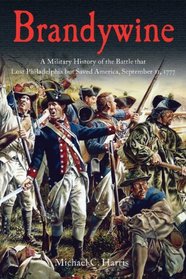Search -
BRANDYWINE: A Military History of the Battle that Lost Philadelphia but Saved America, September 11, 1777
BRANDYWINE A Military History of the Battle that Lost Philadelphia but Saved America September 11 1777
Author:
"Brandywine Creek calmly meanders through the Pennsylvania countryside today, but on September 11, 1777, it served as the scenic backdrop for the largest battle of the American Revolution, one that encompassed more troops over more land than any combat fought on American soil until the Civil War. Long overshadowed by the stunning American victor... more »
Author:
"Brandywine Creek calmly meanders through the Pennsylvania countryside today, but on September 11, 1777, it served as the scenic backdrop for the largest battle of the American Revolution, one that encompassed more troops over more land than any combat fought on American soil until the Civil War. Long overshadowed by the stunning American victor... more »
ISBN-13: 9781611211627
ISBN-10: 161121162X
Pages: 480
Rating: ?
ISBN-10: 161121162X
Pages: 480
Rating: ?
0 stars, based on 0 rating
Publisher: Savas Beatie
Book Type: Hardcover
Other Versions: Paperback
Members Wishing: 3
Reviews: Amazon | Write a Review
Book Type: Hardcover
Other Versions: Paperback
Members Wishing: 3
Reviews: Amazon | Write a Review
Genres:
- History >> Americas >> United States >> Revolution & Founding
- History >> Military >> United States




